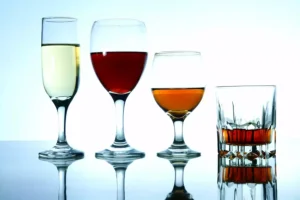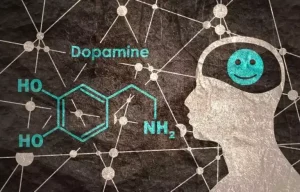Understanding Teen Addiction: Causes and Solutions

Notably, the survey results are released the same year the data are collected. Help prevent teen drug abuse by talking to your teen about the consequences of using drugs and the importance of making healthy choices. The National Institute on Drug Abuse states that the physical effects of drug misuse in teens are not the only negative effects. Once a teen begins taking drugs for recreational use, the likelihood of them making poor decisions and being involved in high-risk activities increase significantly.
Alcohol and Nicotine
The number of monthly overdose deaths increased 65% overall, from 31 in July 2019 to 51 in December 2021, peaking at 87 in May 2021 (Figure 1). The number of deaths involving IMFs more than doubled, from 21 to 44 during this period, peaking https://ecosoberhouse.com/ at 78 in May and August 2021. Median monthly overdose deaths among adolescents increased 109%, from 32.5 during July–December 2019 to 68 during July–December 2021; during the same period, deaths involving IMFs increased 182%, from 22 to 62.
Looking for Treatment?
Median monthly deaths increased during each 6-month period from July–December 2019 through January–June 2021 and decreased during July–December 2021 but remained approximately twice as high as during July–December 2019. The consequences of addiction can ripple out into all areas of a teen’s life. Academic performance often takes a hit, with grades plummeting and disciplinary issues cropping up. Social relationships can suffer too, with addicted teens often withdrawing from family and longtime friends in favor of new, potentially problematic social circles.
- The association between early alcohol use and subsequent alcohol-related problems has been further supported by data drawn from two large population studies conducted in two countries with distinct alcohol use policies and cultures.
- Two thirds of decedents had one or more potential bystanders present, but most provided no overdose response.
- In 2022, reported use of any illicit drug within the past year remained at or significantly below pre-pandemic levels for all grades, with 11% of eighth graders, 21.5% of 10th graders, and 32.6% of 12th graders reporting any illicit drug use in the past year.
Risk Factors for High-Risk Substance Use
„So it’s not just educators in schools. It’s parents and families. It’s the communities themselves. It’s every level of government. We have to come together. Too often, the ills of society find the way to our schoolhouse doors, but the resources of society don’t follow them.“ But Becky Pringle, president of the National Education Association, the nation’s largest teachers union, warns schools are just one piece of the puzzle. Before the overdose, Griffin Hoffmann was a sophomore, about to lead his Portland, Ore., high school’s tennis team. Sienna Vaughn was a junior in Plano, Texas, who participated in Girl Scouts and cheerleading. Laird Ramirez was 17 years old living near Charlotte and competing on his high school’s wrestling team. The 2023 Monitoring the Future data tables highlighting the survey results are available online from the University of Michigan.

Other NIDA Sites
Teens may be more likely to try substances for the first time when hanging out in a social setting. It’s true that teens under 18 can be sent to rehab by a parent or legal guardian against their will. However, treatment may progress more smoothly and have more of an impact if the child can accept the need for treatment.

How Do You Identify Addiction?
† Includes IMF and fentanyl analogs, which were identified using both toxicology and scene evidence because toxicology alone cannot distinguish between pharmaceutical fentanyl and IMFs. All authors have completed and submitted the International Committee of Medical Journal Editors form for disclosure of potential conflicts of interest. As we face this challenge head-on, it’s important to remember that addiction doesn’t discriminate.
- Drug overdose deaths among adolescents increased substantially beginning in late 2019.
- Teens may use drugs due to peer pressure, curiosity, or to do better in school.
- Also, recent findings by Chen et al. (2018) demonstrate that smoking and non-smoking youth report urges to smoke and have greater activation of reward-related brain regions following the presentation of e-cigarette advertisements in comparison to neutral cues.
- The answer lies in a complex interplay of risk factors that can create the perfect storm for dependency to take hold.
- Though the sample size of 22,318 respondents in 2023 was lower than the sample size of a typical pre-pandemic year’s data collection, the results were gathered from a nationally representative sample, and the data were statistically weighted to provide national numbers.
We’re talking potential damage to areas responsible for decision-making, impulse control, and emotional regulation. It’s like building a house on a shaky foundation – things might look okay for a while, but problems will crop up down the line. If you’ve got a parent or sibling who’s struggled with substance abuse, you’re at a higher risk of developing similar issues. It’s not a guarantee, mind you, but it’s like starting a race with a weight on your back. A ticking time bomb lurks within the lives of countless teenagers, as the insidious grip of addiction threatens to derail their futures and tear families apart.

Serotonin also causes the release of other hormones that may cause emotions of intimacy and attraction. Because of this, users might be more affectionate than usual and possibly develop ties with total strangers. The effects wear off three to six hours later, while a moderate dose may cause withdrawal symptoms to continue for a week. These symptoms include a decline in sex interest, a drop in appetite, problems sleeping, confusion, impatience, anxiety, sorrow, Impulsivity and violence, issues with memory and concentration, and insomnia are a few of them. Unsettlingly, it is rising in popularity in India, particularly among teenagers [31].

Teens who experiment with drugs and other substances put their health and safety at risk. The teen brain is particularly vulnerable to being rewired by substances that overload the reward circuits in the brain. In addition to being a top producer of illicit opium, India is a significant drug consumer. Except for teen drug abuse the chemical produced for medicinal purposes, it is imperative to prohibit both production and usage since if a relatively well-governed nation like India cannot stop the drug from leaking, the problem must be huge in scope [33]. From 2019 to 2021, overdose deaths among persons aged 14–18 years increased.
 Авточасти на ниски цени
Ксенон
Части за турбокомпресори
Акумулатори
Авточасти на ниски цени
Ксенон
Части за турбокомпресори
Акумулатори
